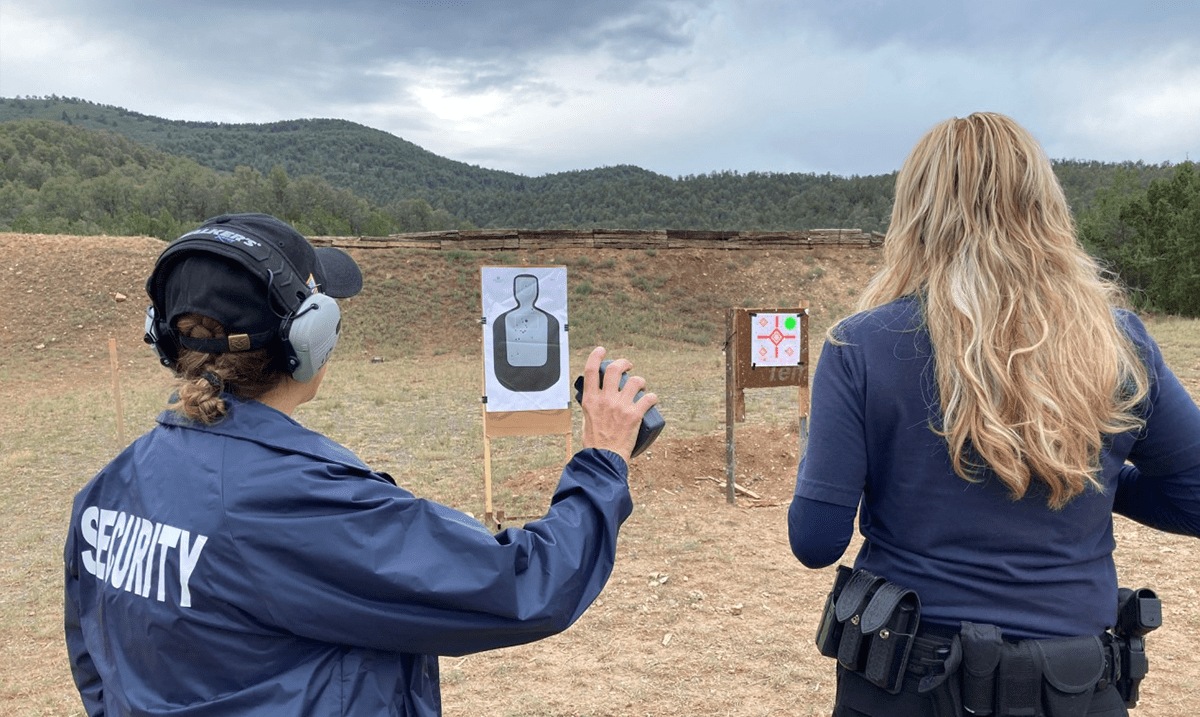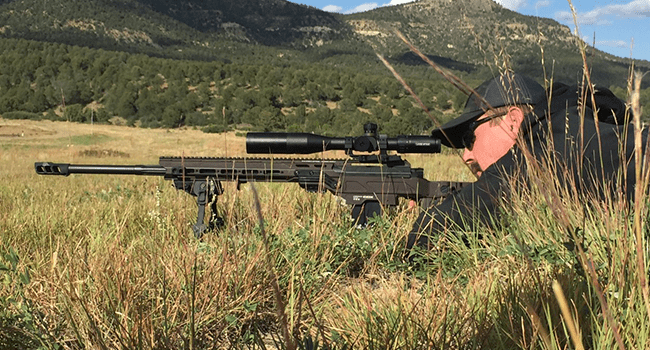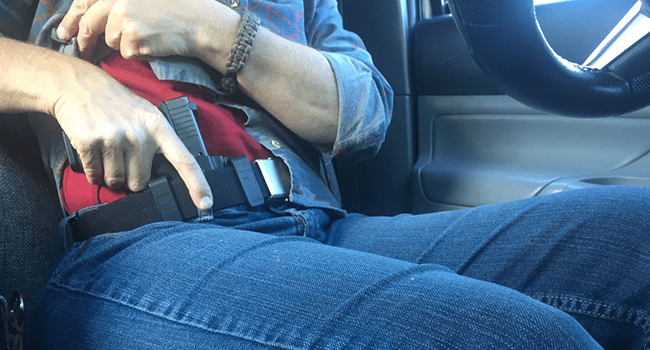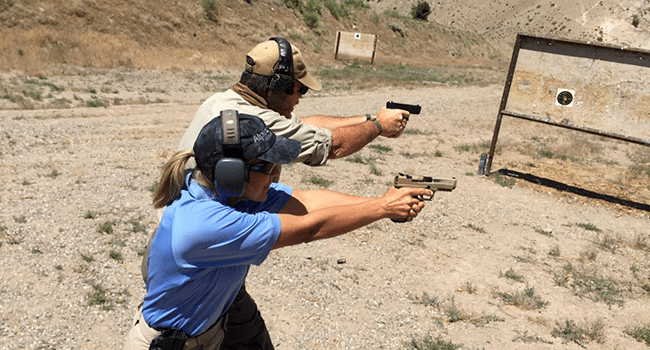
By Eve Flanigan
Have you ever found yourself getting the shakes when trying to fire your handgun with precision? Do intense physical training drills render your limbs Jello, even though you’re fit? Believe it or not, it happens to most shooters at one time or another, but these common impairments to performance are easily overcome if you harness the most-overlooked fundamental of shooting: breath control.

Long-range shooters often use the respiratory pause. Here, John Tiegen fires a Cadex Guardian Lite in 6.5 Creedmoor.
Different types of shooting utilize this fundamental in different ways. Long-range rifle specialists learn correct breathing techniques that minimize gun movement early on, coordinating trigger presses with exhalation. They call it a respiratory “pause.” If shots are timed to break when the lungs are mostly empty and during the pause before the next inhalation, interference with the muzzle is virtually eliminated.
Stress is an Ugly Thing
Success in defensive shooting—and really most any high-stress moment—also requires awareness and control of the breathing process. A perceived and sudden threat, whether it’s a criminal actor approaching with apparent harmful intent or the beep that means “Go” in competition, is stress. That kind of stress is followed closely by a generous helping of adrenaline. The physical and mental responses that come next can take control of you.
What biologists might refer to as the “flight response” ensues. Pupils contract, narrowing vision. The heart begins to beat faster, and the rate of breathing often follows suit. The senses of hearing and smell may go completely dull, or they may kick into overdrive. In extreme instances, voiding of the bladder or bowels may occur without the excited person being aware. In addition, when respiration and heart rate spiral up in tandem, cognition and fine motor skills suffer too—and that’s a problem when you’re in a fight for your life. Great decision-making capacity and an acutely controlled trigger finger are necessities in such a situation.
This cascade of unbidden physical responses doesn’t have to spell disaster for your competition, marksmanship qualification or defensive response (or any other stress in life, for that matter)! In fact, you can borrow techniques used by elite athletes to harness that energy boost for the better.
Beating the Shakes
“Breath control” sounds simple, and it can be. But without intentional practice, most everyone defaults to the performance-killing mistake of unconsciously holding their breath. Doing so allows even minor stress symptoms to magnify in influence. The most common one I see on the pistol range is “the shakes,” at least that’s what most people call it. It’s a fine motor tremor in the hands, a small vibration that can make a big difference in maintaining sight picture. Hunters experience the same as a manifestation of so-called “buck fever.”
An untrained shooter’s most frequent response to this annoying symptom is either frustration, embarrassment or both, but these emotion-based reactions infallibly make the shakes even more persistent. Often, the outcome is a missed shot, and when anxiety is met with more anxiety, a vicious cycle of worsening performance ensues. So, let’s talk about a more productive response that puts the shooter, not the stress, in the driver’s seat.
The first step to stopping the anxious response is to change your way of thinking about it. Noticing the shakes, or breathlessness or a climbing heart rate gets you started, and that’s the easy part. What comes next is a decision to gain control of the symptom by gaining control of your breathing. For me and those who train with me, I encourage labeling any stress-response symptoms as a reminder to regulate breathing, much like an MPH sign on the highway reminds us to regulate the gas pedal.
Once you’ve noticed and acknowledged the sign, you can implement a technique to effect breathing regulation. My go-to method is very simple: Put the tip of the tongue behind your top front teeth and inhale. Try it now. Feel the infusion of fresh oxygen to your fingertips, right where it’s needed for gun and gear manipulation. Feel how it gently pushes your belly into your belt, because you just implemented deep, diaphragmatic breathing without having to think of that weird muscle called a diaphragm!
I love this technique not only because it’s fast and instantly effective, but because it’s also subtle and doesn’t take away from paying attention to what’s going on around me. Unlike other techniques that require a laborious counting of heartbeats as you inhale and exhale (and something that takes your focus off a potential threat), this one doesn’t feel like doing a formal exercise. It works well in competition, too. When shooting under the pressure of a timer, I take advantage of the “shooter ready” or the “stand by” command as a signal to breathe using this method. It sets me up for better focus and control as I engage targets.
On extended tasks that require some measure of endurance, like stalking game or a lengthy sparring session in a martial arts class, you’ll find there are usually some windows of retreat from the action, however small. Program yourself to slow down and regulate breathing during those moments. At first it requires conscious thought, but with practice it becomes a helpful habit.
To be clear, this technique will not put anyone in “Zen” meditation mode! That’s not what it’s for. Highly trained athletes seek to perform in “the zone,” the moniker for an excited but enhanced state. It is entirely possible to have an elevated heart rate, to be performing quick and deliberate actions, and be all-in physically while maintaining breath control. Doing so not only preserves critical skills and mental clarity, it goes a long way to having you perform better when you might most need to have all your faculties about you.
In this video, Top Shot Champion Chris Cheng explains and demonstrates breathing control for beginner target shooters. Firearm instructors and experienced shooters are encouraged to watch and share these tips with newcomers to the shooting sports.







